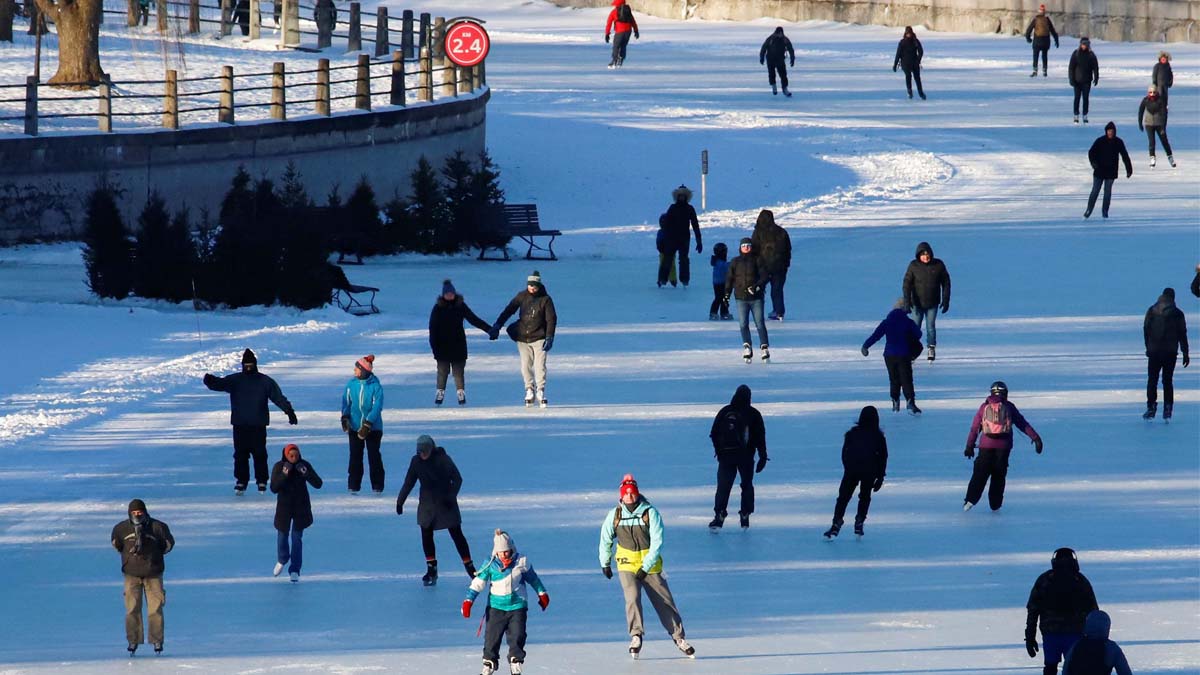
World’s largest outdoor ice rink closed

First it was ski resorts not being able to operate due to the climate crisis. Now, the world’s largest outdoor ice rink is facing the possibility of a season fully closed, due to a lack of ice.
Confirmed by Guinness to be the world’s largest naturally frozen ice rink, the Rideau Canal Skateway in Ottawa sees more than a million visitors each year.
The 4.8-mile Skateway is in fact part of the Rideau Canal, a 125-mile UNESCO World Heritage Site connecting Ottawa to Lake Ontario and the St. Lawrence River. The Skateway is the portion of the canal running through central Ottawa, from downtown to Dow’s Lake.
Each year, generally from early January to early March, around a million people flock to the site to skate, shuffle or walk down it, or wander along the paths that run alongside it. In January, CNN Travel named Ottawa one of its 23 places to go for 2023, thanks to the Skateway.
Its opening dates, however, are always dependent on the weather.
The Skateway is opened to the public when the ice is at least 30 centimetres thick – just under 12 inches.
That kind of thickness needs 10-14 days of “consecutive cold weather,” according to the National Capital Commission, which manages the site.
For this task, “cold” is defined as -10°C to -20°C, or 14 to -4 F. Professionals prepare for the start of the skating season by flooding the (already deep) ice to thicken it further.
But this year, there isn’t enough ice to create the skateway.
Ottawa is experiencing one of its warmest ever winters, as temperatures in the usually very cold capital city have stayed mild. As climate change accelerates, winters are getting hotter around the world. The last eight years have been the warmest on record for the planet.
“Persistent above-normal seasonal temperatures and current ice conditions prevent us from opening the Rideau Canal Skateway this week,” an NCC spokesperson told CNN in an email.
“We remain hopeful that we’ll be able to welcome skaters to the Skateway this year. We will reassess conditions at the end of the week.”
On February 3, the NCC issued a safety advisory, telling the public that the ice was “dangerously thin” with water of up to 14 feet deep below it.
“The presence of work crews on the canals in the coming days must not be construed as a sign that the ice surface is stable,” it declared.
“The team are professionals who know how to manage the risks associated with their work.”
Once the Skateway is ready, green flags appear to signal that it’s safe. And once open, every night (weather permitting) the surface is swept and the ice is re-flooded to smooth out cracks. Around 22,000 skaters take to the ice every day.
The NCC is already working to keep the Skateway in service despite the climate crisis.
In 2022, it partnered with Carleton University to address the impacts of climate change on the site. A four-year project will see the first two years spent gathering data, and then modelling to predict future ice behaviour. Finally, the academics will suggest solutions for adapting the Skateway. CNN












Comments